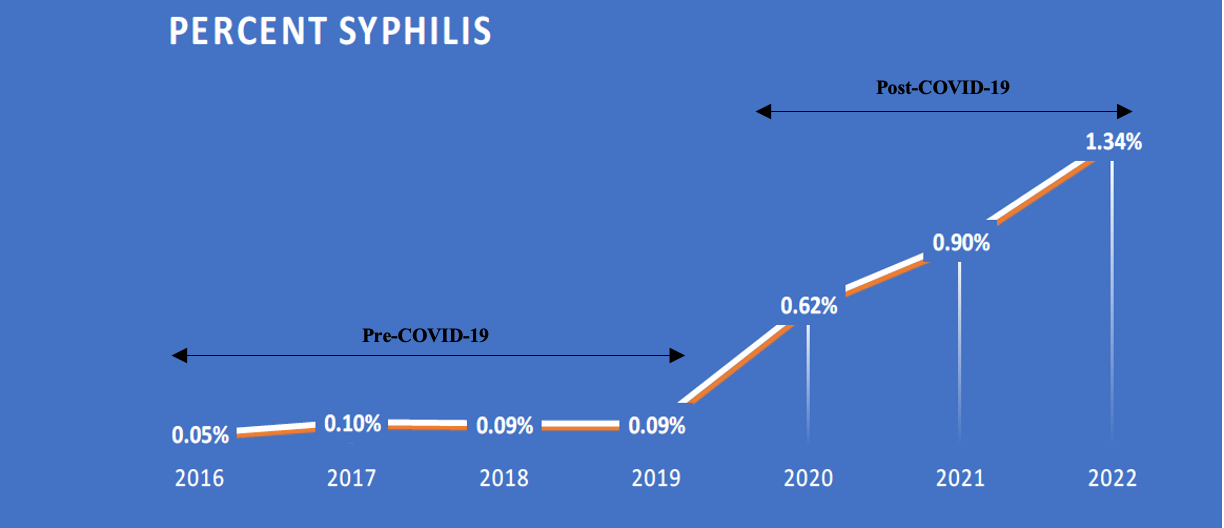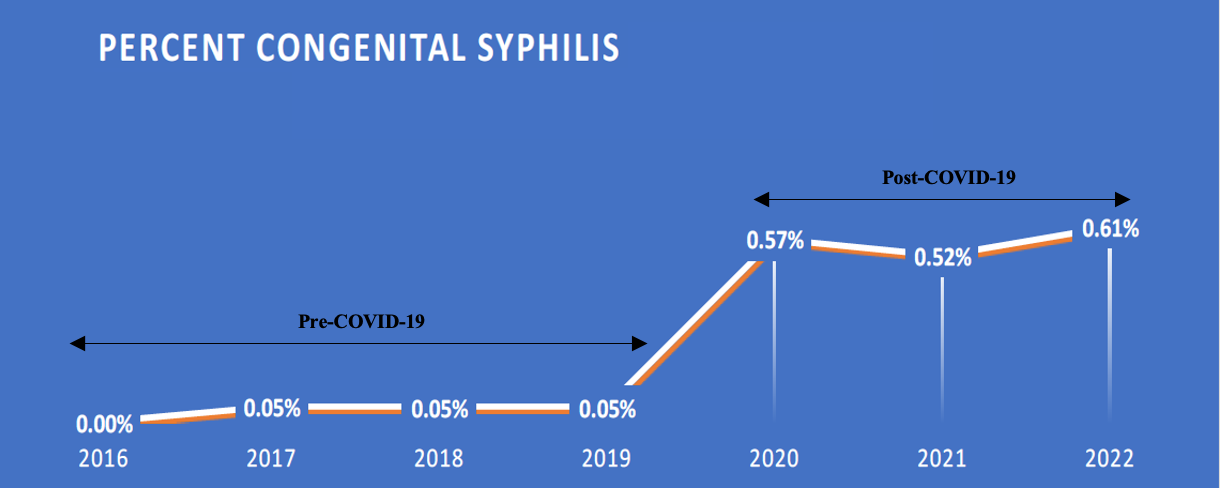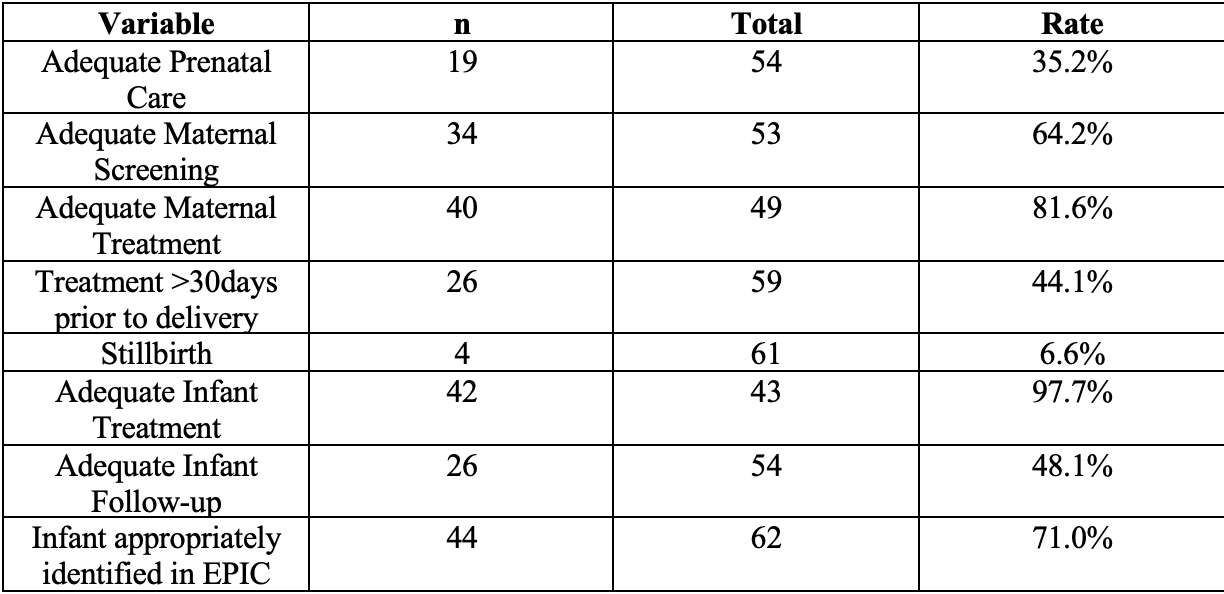Neonatal Infectious Diseases/Immunology
Neonatal Infectious Diseases/Immunology 4
415 - Analysis of Maternal Syphilis and Congenital Syphilis (CS) Rates at a New Jersey University Hospital
Sunday, April 30, 2023
3:30 PM - 6:00 PM ET
Poster Number: 415
Publication Number: 415.335
Publication Number: 415.335
Paige Heiman, Cooper Medical School of Rowan University, Philadelphia, PA, United States; Vineet Bhandari, The Children's Regional Hospital at Cooper, Camden, NJ, United States; Sarah E. Davenport, Rowan University, Camden, NJ, United States; Krystal Hunter, Cooper Medical School of Rowan University, Camden, NJ, United States; Melissa Micallef, Cooper Medical School of Rowan University, Springfield, PA, United States; Alla Kushnir, The Children's Regional Hospital at Cooper, Camden, NJ, United States

Paige Heiman (she/her/hers)
Medical Student
Cooper Medical School of Rowan University
Philadelphia, Pennsylvania, United States
Presenting Author(s)
Background: Syphilis cases have been rising in the U.S. and internationally over the past few decades, mirrored by a rise in cases of congenital syphilis (CS). Various social determinants of health have been shown to increase risk of CS transmission, including race, homelessness, and illicit drug use. The COVID-19 pandemic may have contributed to increased syphilis transmission in the U.S., and subsequent increased CS.
Objective: We aimed to evaluate these relationships at a large urban hospital to help identify changes in CS rates and evaluate potential interventions to reduce CS transmission.
Design/Methods: Retrospective chart review evaluated all pregnant women with a positive test (RPR or FTA), or previous diagnosis of syphilis at a tertiary urban academic hospital in NJ between January 1, 2016–June 1, 2022. Demographics, social determinants of health, and data on each pregnancy such as adequacy of screening, treatment, and prenatal care were extracted. Charts of infants exposed to syphilis in utero were reviewed for development of CS and characteristics such as adequacy of screening and follow-up.
Results: There was a significant increase in maternal syphilis and CS rates at our hospital over the 5 years, and particularly pre- and post-COVID-19 (p< 0.001). The rise mirrored national and NJ state CS rates between 2016-2019 but exceeded national and state rates in 2020-21 (p< 0.001) (post COVID-19). Of the mothers in the study, 35.2% received adequate prenatal care, 64.2% received adequate screening, 81.6% received adequate treatment, and 44.1% received treatment >30 days prior to delivery. Infant transmission occurred in 50% of cases between 2017-2019, rising to 92.3% of cases in 2020 before falling back to 61.1% and 45.5%, in 2021 and 2022 (6 months of data available), respectively. Stillbirth was noted in 6.6% of the pregnancies. Of the liveborn infants, 97.7% received appropriate treatment and 48.1% received adequate outpatient follow-up. CS development was not significantly associated with race, homelessness, or illicit drug use.
Conclusion(s): There are increasing rates of maternal syphilis and CS, particularly during the years of 2020-2022 (COVID-19 pandemic), which was higher in 2020 compared to national and NJ rates. Access to adequate prenatal care and infant outpatient follow-up, regardless of social determinants of health, were associated with increased rate of CS. Infant syphilis transmission is similar to pre-COVID levels, after reaching near 100% transmission in 2020.



